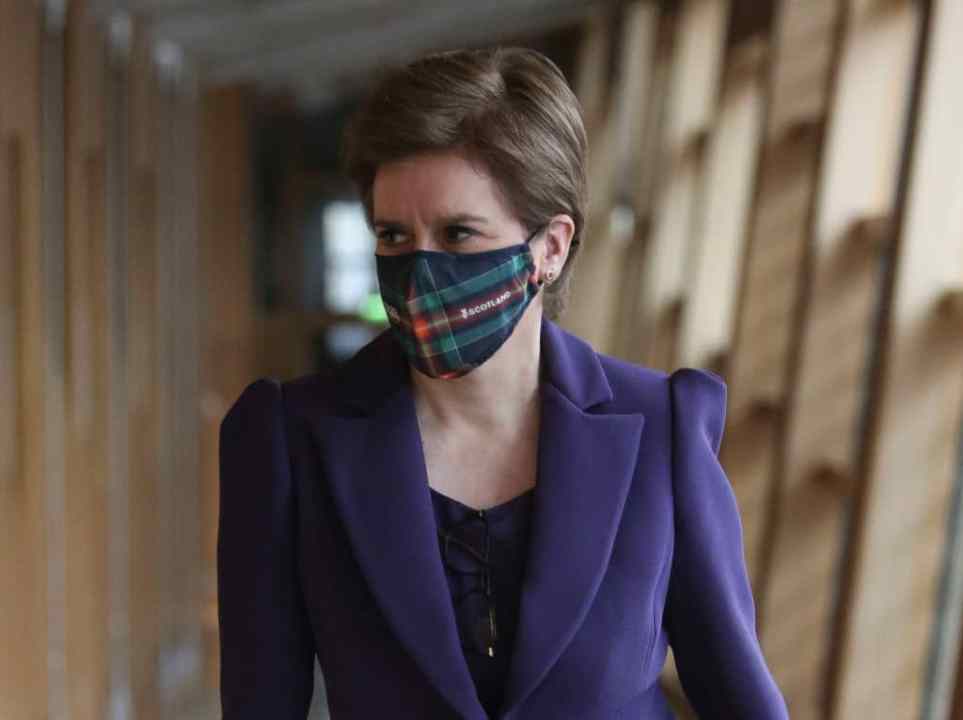Less than a quarter of Scots believe Scotland is likely to leave the UK within the next five years, according to a new poll. The poll also shows that secession does not command majority support.
As we approach the second anniversary of the start of the pandemic, it seems getting back to normal is more important to most people than the break up of the UK. Managing to holiday abroad over the next two years is likely to be a more popular aim than another referendum.
Seemingly disconnected from that reality though are Scotland’s nationalist parties, which last week produced – in conjunction with the National newspaper and a separatist campaigning organisation called Believe in Scotland – an eight-page tabloid-style pull-out designed to make the case for secession.
Billed as being ‘delivered free to a million homes across Scotland’ before St Andrews day, the publication included articles from senior SNP figures, including Nicola Sturgeon and finance secretary Kate Forbes, and from the Scottish Green party co-head and Scottish government minister Lorna Slater.
Most of the content is low-grade, Farage-esque anti-politics politics, drumming up fears of nasty outside forces doing Scotland down. More alarmingly though, some of the content is either misleading or outright misinformation.
Take Kate Forbes’ contribution, for instance. In her column she argues Scotland is a wealthy country that ‘more than pays its way’ and ‘generates enough tax to cover all devolved spending – despite what opponents of independence would mislead you to believe’.
The first statement is clearly designed to give readers the impression Scotland is a net fiscal contributor to the UK. This is not the case. The Scottish government’s latest official statistics show Scotland’s notional deficit for 2020-21 was 22.4 per cent of Scottish GDP, or £36.3 billion. Pre-pandemic (2019-20), the deficit was 8.6 per cent of GDP, or £15 billion. Of course, at the UK level a real deficit is being financed via large-scale borrowing by the Treasury. When Scotland’s population share of that borrowing is accounted for, the numbers show Scotland benefitting from a net fiscal transfer of around £12 billion per year.
Forbes’ second statement is also misleading. By taking only a selection of state spending, and asserting that Scotland’s current tax revenues cover these areas, you can imply that this demonstrates that a newly-separated Scotland would be able to fund itself. All it really shows, however, is that Scottish taxes alone only pay for a fraction of Scotland’s spending needs.
This is not to say Scotland’s economy is weak. The Scottish economy is more than capable of generating healthy tax revenues per head. But Scotland has such a large deficit because it is a big spender of state money (government spending in or on behalf of Scotland was around 12 per cent higher than for the UK as a whole pre-pandemic).
The pull-out also repeats a falsehood deployed by Nicola Sturgeon recently at Cop26. It states: ‘Ninety-seven per cent of our electricity now comes from renewables’.
This is not true. In 2020, 56 per cent of the electricity consumed in Scotland came from renewable sources.
In a briefing to international journalists this month, Sturgeon, speaking about threats from Russia, said: ‘The problem of misinformation in our social media and therefore in our wider political debates is a very real one. I think all democratic politicians should be very vigilant about that and very willing to call that out.’
Just a few days later she was directing her activists to deliver, to a million homes across Scotland, misleading propaganda that can only fairly be described as misinformation.
If there was any possibility of another referendum happening in the next few years then this would be a real concern – real enough for any UK government to insist the current nationalist-dominated Holyrood cannot be trusted to implement a fair plebiscite. But the point of the exercise is clearly not to win over new converts in the build-up to a referendum. These days even Sturgeon must have to stifle a snigger when she talks about another referendum happening before the end of 2023.
Instead, the target audience for this propaganda are the true believers, whom the SNP now have a fairly well-established strategy of serially deluding. That is why the language used throughout is aggressive and Farage-esque, and why it came free with a copy of the nationalist fanzine newspaper the National. This is not a pamphlet designed to reach out to the persuadable – it’s a comfort blanket for the faithful.
Those of a heretical disposition in Scotland can take some solace in that. Scots might have to endure a winter of misinformation, but it signals only desperation from the SNP. The nationalists aren’t on the march. They are sitting in a bunker talking to themselves.
 John Ferry
John Ferry
Nicola Sturgeon’s desperate new misinformation drive







Comments